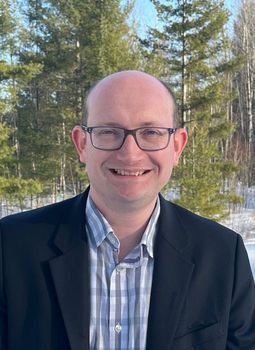"This story goes back nearly 20 years," says Prof. Paul François, by way of introduction. This biophysicist and bio-informaticist from UdeM's Department of Biochemistry and Molecular Medicine is interested in automatic learning, a field at the crossroads of various disciplines. "I'm mainly trying to develop a mathematical model for what's happening in biology in order to improve our understanding of it."
The story actually began when Prof. François attended a seminar on the immunity response detection model developed by Franco-American immunologist Grégoire Altan-Bonnet of the U.S. National Cancer Institute: "From a mathematical viewpoint, I didn't understand what was going on. So I developed an interest in the immune system."
After many years of fruitful collaboration, the two researchers, joined by immunologist Naomi Taylor (also of the U.S. NCI) and their teams (including the other principal authors François Bourassa, Sooraj Achar and Taisuke Kondo), can now say "mission accomplished". Their findings were recently published in the journal Cell.
"It's really a team effort," Prof. François emphasizes. Thanks to the robotics platform developed in Dr. Altan-Bonnet's lab, in collaboration with Prof. François - "akin to an immune system microscope" - the scientists were able to study and compare the reactions of immune cells against cancer cells, and then design a mathematical model explaining and predicting the observations subsequently made in laboratory settings.
Immune system judo
In recent years, CAR-T cell immunotherapy (using chimeric antigen receptors) has revolutionized the fight against cancer. In combination with other tools (chemotherapy, radiotherapy), this new type of treatment reprograms the patient's T-cells (the "warriors" of the immune system) to attack cancer cells. "It's a bit like immune system judo," says Prof. François.
In the lab, the T-cells are modified by adding a synthetic chimeric antigen receptor (CAR). This receptor prompts the T-cells to actively destroy cancer cells, although its mechanism for recognizing tumours is not very precise, so the T-cells often attack healthy tissue as well. In other words, CAR‑T immunotherapy is a highly effective treatment for leukemia, where the lack of target specificity is not fatal. But it works less well with solid cancers, such as those affecting the ovaries. "CAR-T cells attack tumours in the ovaries, but they also destroy the patient's healthy tissues, particularly the lungs. You attack the cancer, but you kill the patient," explains Prof. François.
Putting the brakes on
So what's the best way to modulate the immune system's response? The team of scientists made good use of the receptors naturally present in T-cells (TCRs), which can distinguish between healthy and cancerous cells by recognizing the different proteins on their surfaces. But TCRs are not very effective at combatting tumours.
Nevertheless, the researchers successfully blended both strategies to engineer CAR cells that include TCRs. The team discovered how to induce the TCRs to act as a brake, thus mitigating the CAR cells' overly enthusiastic response. "It was long thought that the TCRs were exclusively 'accelerators,' but we showed they could be modulated to suppress the immune response instead of activating it," notes Prof. François.
Seeking a more nuanced response, Prof. François and his student François Bourassa designed a theoretical mathematical model to determine how to modulate the immune response using receptors naturally present on the surface of T-cells. "We came up with a mathematical explanation: to obtain a better immune response, you have to balance out the T-cell's brake and gas pedals."
Drawing on that idea, the team refined an immunotherapy concept known as AEBS (Antagonism-Enforced Braking System). "We're not the only ones who have tried to reprogram CAR cells to make them more effective on tumours, but we're the first ones to use natural receptors as the brake," says Prof. François.
The lab team went on to produce and test T-cells that not only ease up when they encounter healthy tissue, but also go into attack mode when they come across a tumour.
In light of such encouraging findings, a patent application is in the process of being filed; clinical trials may also be carried out. "We started off with a fairly theoretical problem and ended up using the idea to develop a treatment," says Prof. François. This 20-year research journey appears to be bearing fruit!
About this study
The article "Engineering TCR-Controlled Fuzzy Logic into CAR T-Cells Enhances Therapeutic Specificity," by Paul François and his colleagues, was published in the journal Cell.







